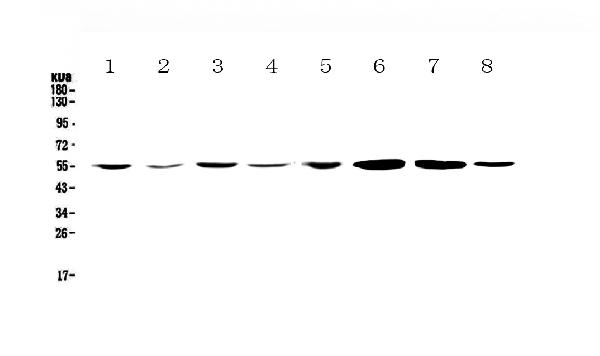
ICC/IF analysis of human peripheral blood cells using GTX21667 CCR3 antibody.
CCR3 antibody
GTX21667
ApplicationsImmunoFluorescence, Western Blot, ELISA, ImmunoCytoChemistry, ImmunoHistoChemistry
Product group Antibodies
TargetCCR3
Overview
- SupplierGeneTex
- Product NameCCR3 antibody
- Delivery Days Customer9
- Application Supplier NoteWB: 1:500. ELISA: 1:30,000. IHC: 1:300. *Optimal dilutions/concentrations should be determined by the researcher.Not tested in other applications.
- ApplicationsImmunoFluorescence, Western Blot, ELISA, ImmunoCytoChemistry, ImmunoHistoChemistry
- CertificationResearch Use Only
- ClonalityPolyclonal
- ConjugateUnconjugated
- Gene ID1232
- Target nameCCR3
- Target descriptionC-C motif chemokine receptor 3
- Target synonymsC C CKR3, CC-CKR-3, CD193, CKR 3, CKR3, CMKBR3, C-C chemokine receptor type 3, C-C CKR-3, CC chemokine receptor 3, CCR-3, b-chemokine receptor, chemokine (C-C motif) receptor 3, eosinophil CC chemokine receptor 3, eosinophil eotaxin receptor
- HostGoat
- IsotypeIgG
- Protein IDP51677
- Protein NameC-C chemokine receptor type 3
- Scientific DescriptionThe protein encoded by this gene is a receptor for C-C type chemokines. It belongs to family 1 of the G protein-coupled receptors. This receptor binds and responds to a variety of chemokines, including eotaxin (CCL11), eotaxin-3 (CCL26), MCP-3 (CCL7), MCP-4 (CCL13), and RANTES (CCL5). It is highly expressed in eosinophils and basophils, and is also detected in TH1 and TH2 cells, as well as in airway epithelial cells. This receptor may contribute to the accumulation and activation of eosinophils and other inflammatory cells in the allergic airway. It is also known to be an entry co-receptor for HIV-1. This gene and seven other chemokine receptor genes form a chemokine receptor gene cluster on the chromosomal region 3p21. Alternatively spliced transcript variants have been described. [provided by RefSeq, Sep 2009]
- Storage Instruction-20°C or -80°C,2°C to 8°C
- UNSPSC12352203





![FACS analysis of human peripheral blood using GTX00536-07 CCR3 antibody [500000000] (APC).](https://www.genetex.com/upload/website/prouct_img/normal/GTX00536-07/GTX00536-07_20191025_AP_006_80_w_23053121_886.webp)
![FACS analysis of human peripheral blood using GTX00536-08 CCR3 antibody [500000000] (PE).](https://www.genetex.com/upload/website/prouct_img/normal/GTX00536-08/GTX00536-08_20191025_AP_006_81_w_23053121_430.webp)
![FACS analysis of human peripheral blood using GTX00536 CCR3 antibody [500000000].](https://www.genetex.com/upload/website/prouct_img/normal/GTX00536/GTX00536_20191025_AP_006_79_w_23053121_552.webp)